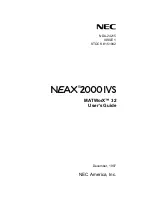
your configuration directory. To edit a macro bound using this method, open the
.e
file for the macro you
want to edit, make and save the changes, then from the main menu, click
Macro
→
Load Module
(
F12
or
gui_load
command). Find and select the
.e
file you just edited and click
Open
. The message
Mod-
ule(s) loaded
appears on the message line, and SlickEdit Core will now honor the changes you made
to the
.e
file when you use the corresponding key sequence.
Deleting Recorded Macros
To delete a macro that has been recorded and saved, from the main menu, click
Macro
→
List Macros
(or use the
list_macros
command). Select the macro you want to delete, and click
Delete
.
To delete a macro that you recorded and bound to a key sequence using
execute_last_macro_key
,
browse to your configuration directory and delete
lastmac<key>.e
and its corresponding
last-
mac<key>.ex
file, where
<key>
matches the
key
you used when creating the binding (keys
0
-
9
,
A
-
Z
, or
F1
-
F12
).
Using Macros to Discover and Control Options
Recording macros provides a good starting point for discovering variables in Slick-C
®
code that control
the behavior of SlickEdit
®
Core.
Since responses to dialog boxes (such as when you select/deselect options) are recorded as Slick-C
source, you can use recorded macros to discover and change these variables quickly. For example, per-
haps you frequently switch line insert styles. Instead of every time clicking
Window
→
Preferences
, ex-
panding
SlickEdit
and clicking
General
in the tree, then double-clicking the
General
setting and selecting
the
More
tab, then selecting the option, you can record those steps as a macro and bind it to a key se-
quence. Now you have an easy way to toggle a feature on and off.
You can also view the source of a recorded macro without naming or saving it, if you just want to see the
code. See
Saving and Editing Recorded Macros
for more information.
Using Macros to Discover and
Control Options
335
Summary of Contents for Corev3.3 for Eclipse
Page 1: ...Think Slick Corev3 3 for Eclipse...
Page 2: ......
Page 3: ...SlickEdit Core v3 3 for Eclipse...
Page 5: ......
Page 6: ......
Page 14: ...xii...
Page 20: ...xviii...
Page 22: ...xx...
Page 23: ...Chapter 1 Introduction 1...
Page 41: ...Chapter 3 User Interface 19...
Page 61: ...Chapter 4 User Preferences 39...
Page 80: ...BODY BODY HTML HTMLEOF Restoring Settings on Startup 58...
Page 82: ...60...
Page 83: ...Chapter 5 Context Tagging 61...
Page 97: ...Chapter 6 Editing Features 75...
Page 124: ...Code Templates 102...
Page 238: ...Figure 6 49 Test Parsing Configuration Example 1 C Refactoring 216...
Page 241: ...Figure 6 51 Test Parsing Configuration Example 3 Reviewing Refactoring Changes 219...
Page 250: ...228...
Page 251: ...Chapter 7 Language Specific Editing 229...
Page 328: ...306...
Page 329: ...Chapter 8 Tools and Utilities 307...
Page 350: ...328...
Page 351: ...Chapter 9 Macros and Macro Programming 329...
Page 360: ...338...
Page 361: ...Chapter 10 SlickEdit Core Dialogs 339...
Page 375: ...Find and Replace View 353...
Page 491: ...Chapter 11 Appendix 469...
Page 567: ......
Page 568: ......
















































